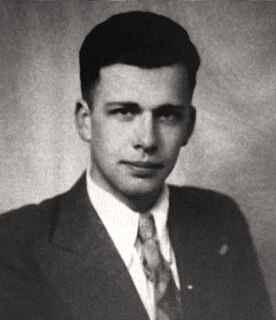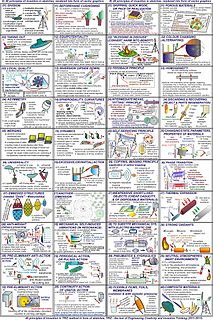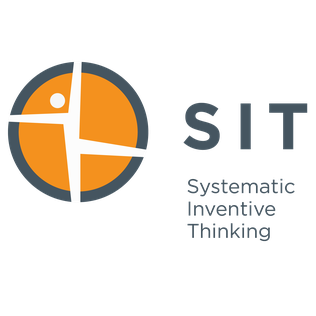
An invention is a unique or novel device, method, composition or process. The invention process is a process within an overall engineering and product development process. It may be an improvement upon a machine or product or a new process for creating an object or a result. An invention that achieves a completely unique function or result may be a radical breakthrough. Such works are novel and not obvious to others skilled in the same field. An inventor may be taking a big step toward success or failure.
A software patent is a patent on a piece of software, such as a computer program, libraries, user interface, or algorithm.
TRIZ is "a problem-solving, analysis and forecasting tool derived from the study of patterns of invention in the global patent literature". It was developed by the Soviet inventor and science-fiction author Genrich Altshuller (1926-1998) and his colleagues, beginning in 1946. In English the name is typically rendered as the theory of inventive problem solving, and occasionally goes by the English acronym TIPS.

Genrikh Saulovich Altshuller, was a Soviet engineer, inventor, and writer. He is most notable for the creation of the Theory of Inventive Problem Solving, better known by its Russia acronym TRIZ. He founded the Azerbaijan Public Institute for Inventive Creation, and was the first President of the TRIZ Association. He also wrote science fiction under the pen-name Genrikh Altov.
Creative problem-solving (CPS) is the mental process of searching for an original and previously unknown solution to a problem. To qualify, the solution must be novel and reached independently. The creative problem-solving process was originally developed by Alex Osborn and Sid Parnes.
A patent examiner is an employee, usually a civil servant with a scientific or engineering background, working at a patent office. Major employers of patent examiners are the European Patent Office (EPO), the United States Patent and Trademark Office (USPTO), the Japan Patent Office (JPO), and other patent offices around the world.
The software patent debate is the argument about the extent to which, as a matter of public policy, it should be possible to patent software and computer-implemented inventions. Policy debate on software patents has been active for years. The opponents to software patents have gained more visibility with fewer resources through the years than their pro-patent opponents. Arguments and critiques have been focused mostly on the economic consequences of software patents.
Industrial property is one of two subsets of intellectual property, it takes a range of forms, including patents for inventions, industrial designs, trademarks, service marks, layout-designs of integrated circuits, commercial names and designations, geographical indications and protection against unfair competition. In some cases, aspects of an intellectual creation, although present, are less clearly defined. The object of industrial property consists of signs conveying information, in particular to consumers, regarding products and services offered on the market. Protection is directed against unauthorized use of such signs that could mislead consumers, and against misleading practices in general.
The inventive step and non-obviousness reflect a general patentability requirement present in most patent laws, according to which an invention should be sufficiently inventive—i.e., non-obvious—in order to be patented. In other words, "[the] nonobviousness principle asks whether the invention is an adequate distance beyond or above the state of the art".
Technological change (TC) or technological development, is the overall process of invention, innovation and diffusion of technology or processes. In essence, technological change covers the invention of technologies and their commercialization or release as open source via research and development, the continual improvement of technologies, and the diffusion of technologies throughout industry or society. In short, technological change is based on both better and more technology.
Problem shaping means revising a question so that the solution process can begin or continue. It is part of the larger problem process that includes problem finding and problem solving. Problem shaping often involves the application of critical thinking.
The laws of technical systems evolution are the most general evolution trends for technical systems discovered by TRIZ author G. S. Altshuller after reviewing thousands USSR invention authorship certificates and foreign patent abstracts.
Unified Structured Inventive Thinking (USIT) is a structured, problem-solving methodology for finding innovative solution concepts to engineering-design type problems. Historically, USIT is related to Systematic Inventive Thinking (SIT), which originated in Israel and is related to TRIZ, the Russian methodology. It differs from TRIZ in several ways, but most importantly it is a simpler methodology, which makes it quicker to learn and easier to apply. It requires no databases or computer software.

The 40 Principles of invention are a suite of ideas that purport to aid in solving hard technical problems.
Systematic Inventive Thinking (SIT) is a thinking method developed in Israel in the mid-1990s. Derived from Genrich Altshuller’s TRIZ engineering discipline, SIT is a practical approach to creativity, innovation and problem solving, which has become a well known methodology for innovation. At the heart of SIT’s method is one core idea adopted from Genrich Altshuller's TRIZ which is also known as Theory of Inventive Problem Solving (TIPS): that inventive solutions share common patterns. Focusing not on what makes inventive solutions different – but on what they share in common – is core to SIT’s approach.

Greg Yezersky is an American engineer, consultant and university lecturer, the creator of the General Theory of Innovation (GTI).
Republic Act No. 8293, otherwise known as The Intellectual Property Code of the Philippines lays down the rules and regulations that grant, and enforce patents in the Philippines. Patents may be granted to technical solutions such as an inventions, machines, devices, processes, or an improvement of any of the foregoing. The technical solution must be novel, innovative, and industrially useful. In order for a technical solution to be granted a patent, the inventor must file an application to the Bureau of Patents, which will examine, and in some cases, grant its approval. The law is designed as to foster domestic creativity, to attract foreign investors, and to motivate inventors to release their products for public access.
Advanced Innovation Design Approach (AIDA) is a holistic approach for enhancing innovative and competitive capability of industrial companies. The name Advanced Innovation Design Approach (AIDA) was proposed in the research project "Innovation Process 4.0" run at the University of Applied Sciences Offenburg, Germany in co-operation with 10 German industrial companies in 2015–2019. AIDA can be considered as a pioneering mindset, an individually adaptable range of strongest innovation techniques such as comprehensive front-end innovation process, advanced innovation methods, best tools and methods of the theory of inventive problem solving TRIZ, organisational measures for accelerating innovation, IT-solutions for Computer-Aided Innovation, and other tools for new product development, elaborated in the recent decade in the industry and academia.

Systematic Inventive Thinking (SIT) is a privately owned international innovation company based in Tel Aviv, Israel, with offices/affiliates in seven countries. Since 1995, SIT has worked in 73 countries and with more than 1000 companies in a wide range of industries.
In TRIZ, inventive standards are a set of rules of synthesis and transformation of technical systems directly resulting from laws of evolution of these systems. As a rule, solving of a complex inventive problem is addressed to a combination of at least one TRIZ method and physical effect. Based on frequently used combinations of TRIZ methods and physical effects Genrich Altshuller proposed inventive standards.




